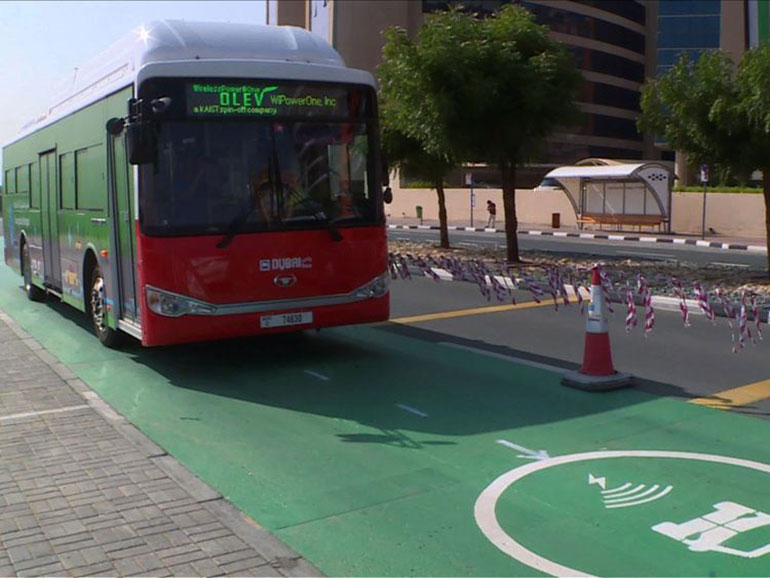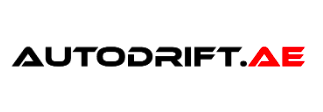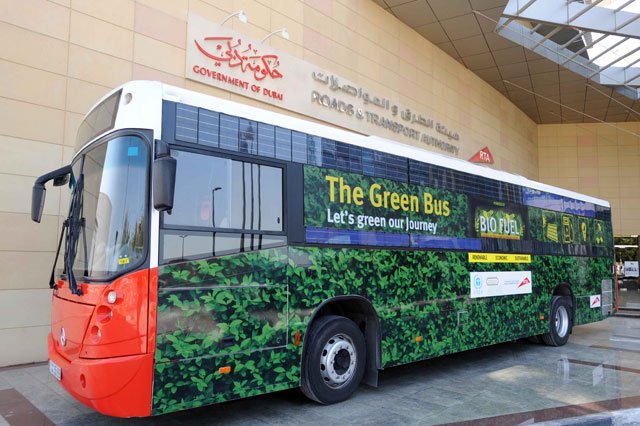The current battery technology has a limited travel range at a high cost. The long charging times and low operating efficiencies are due to battery weight. These issues must be dealt with in order to increase the adoption of electric vehicles (EVs) in both personal and public transportation. These limitations can be fixed with the introduction of dynamic wireless-power-transfer-enabled, which can charge an EV while it’s in motion.
 In operation, the SMFR charging mechanism is activated only when an Electric Vehicle runs over it (a sensor on the road detects the EV), so that other vehicles will not be hindered by the magnetic field. When the vehicle is over the charging mechanism, a power inverter installed on the road lets current flow, generating an electromagnetic field (typically in the range of 20 kHz). Electricity comes from the grid (most often three-phase 380 V or 440 V).
A pick-up coil made of a ferrite core and coiled with copper wires tuned to a resonant frequency is installed underneath the vehicle to collect the magnetic flux. The coil is designed to have maximum exposure to the generated magnetic field, which has an optimized shape for the same purpose. Thus, it increases transmission frequency and reduces magnetic field leakage outside of the space design parameters.
After the induced current of collected magnetic flux is converted into dc power, a power distribution unit (PDU) then distributes it to the appropriate sectors within the vehicle. What’s more, the weight of the battery pack can be reduced as the required energy storage is lower if the vehicle can be powered wirelessly while driving.
In operation, the SMFR charging mechanism is activated only when an Electric Vehicle runs over it (a sensor on the road detects the EV), so that other vehicles will not be hindered by the magnetic field. When the vehicle is over the charging mechanism, a power inverter installed on the road lets current flow, generating an electromagnetic field (typically in the range of 20 kHz). Electricity comes from the grid (most often three-phase 380 V or 440 V).
A pick-up coil made of a ferrite core and coiled with copper wires tuned to a resonant frequency is installed underneath the vehicle to collect the magnetic flux. The coil is designed to have maximum exposure to the generated magnetic field, which has an optimized shape for the same purpose. Thus, it increases transmission frequency and reduces magnetic field leakage outside of the space design parameters.
After the induced current of collected magnetic flux is converted into dc power, a power distribution unit (PDU) then distributes it to the appropriate sectors within the vehicle. What’s more, the weight of the battery pack can be reduced as the required energy storage is lower if the vehicle can be powered wirelessly while driving.
 Embedded under the road, the system doesn’t hamper the movement of people and vehicles and has no visual contamination impact on the city. Moreover, the electromagnetic level onboard the bus is said to be “within the accepted global range,” according to Mattar Mohammed Al Tayer, Director-General and Chairman of the Board of Executive Directors of the Roads and Transport Authority (RTA).
RTA has tested an electric vehicle and a bus on this path, and results “proved a highly efficient wireless-charging system comparable with cable charging,” said Al Tayer.
In a statement, the RTA said the initial phase covers the preparation of the infrastructure and placement of an integrated energy charging network under a road strip for dynamic wireless charging of electric vehicles and moving buses. However, there are no immediate plans to implement the system on a permanent basis, as the technology is said to be “still evolving.”
The RTA is collaborating with the Dubai Electricity and Water Authority (DEWA) and the Dubai Silicon Oasis free zone on the project. DEWA has already installed more than 240 charging stations for electric vehicles across Dubai, with plans to boost this number to 300 by the end of the year. DEWA also has extended a free charging period for electric vehicles until the end of 2021. The incentive applies to non-commercial users who register for the EV Green Charger initiative and is exclusive to DEWA’s public charging stations.
Authorities in Dubai are taking further steps to promote the use of eco-friendly modes of public transport. The RTA is converting 90% of Dubai limos into environmentally friendly hybrid-electric vehicles by 2026 and 50% of Dubai taxis into hybrid vehicles by 2021. It has also launched a trial run of the first electric taxi powered by hydrogen fuel cells as part of the Dubai Taxi fleet. The hydrogen fuel-cell vehicle is noiseless, has zero emissions (only water emissions), can travel 500km on a full tank, and a refill takes only five minutes.
Embedded under the road, the system doesn’t hamper the movement of people and vehicles and has no visual contamination impact on the city. Moreover, the electromagnetic level onboard the bus is said to be “within the accepted global range,” according to Mattar Mohammed Al Tayer, Director-General and Chairman of the Board of Executive Directors of the Roads and Transport Authority (RTA).
RTA has tested an electric vehicle and a bus on this path, and results “proved a highly efficient wireless-charging system comparable with cable charging,” said Al Tayer.
In a statement, the RTA said the initial phase covers the preparation of the infrastructure and placement of an integrated energy charging network under a road strip for dynamic wireless charging of electric vehicles and moving buses. However, there are no immediate plans to implement the system on a permanent basis, as the technology is said to be “still evolving.”
The RTA is collaborating with the Dubai Electricity and Water Authority (DEWA) and the Dubai Silicon Oasis free zone on the project. DEWA has already installed more than 240 charging stations for electric vehicles across Dubai, with plans to boost this number to 300 by the end of the year. DEWA also has extended a free charging period for electric vehicles until the end of 2021. The incentive applies to non-commercial users who register for the EV Green Charger initiative and is exclusive to DEWA’s public charging stations.
Authorities in Dubai are taking further steps to promote the use of eco-friendly modes of public transport. The RTA is converting 90% of Dubai limos into environmentally friendly hybrid-electric vehicles by 2026 and 50% of Dubai taxis into hybrid vehicles by 2021. It has also launched a trial run of the first electric taxi powered by hydrogen fuel cells as part of the Dubai Taxi fleet. The hydrogen fuel-cell vehicle is noiseless, has zero emissions (only water emissions), can travel 500km on a full tank, and a refill takes only five minutes.
Currently in Test
In Dubai, a wireless technology that helps an Electric Vehicle charge while parked or in motion is now on trial. The wireless-charging unit is embedded beneath a 60-meter road stretch in the city and uses a shaped magnetic field in resonance (SMFR) technology to enable a seamless operation of the vehicle without having to stop at charging stations.Dubai Electric Bus Technology
 In operation, the SMFR charging mechanism is activated only when an Electric Vehicle runs over it (a sensor on the road detects the EV), so that other vehicles will not be hindered by the magnetic field. When the vehicle is over the charging mechanism, a power inverter installed on the road lets current flow, generating an electromagnetic field (typically in the range of 20 kHz). Electricity comes from the grid (most often three-phase 380 V or 440 V).
A pick-up coil made of a ferrite core and coiled with copper wires tuned to a resonant frequency is installed underneath the vehicle to collect the magnetic flux. The coil is designed to have maximum exposure to the generated magnetic field, which has an optimized shape for the same purpose. Thus, it increases transmission frequency and reduces magnetic field leakage outside of the space design parameters.
After the induced current of collected magnetic flux is converted into dc power, a power distribution unit (PDU) then distributes it to the appropriate sectors within the vehicle. What’s more, the weight of the battery pack can be reduced as the required energy storage is lower if the vehicle can be powered wirelessly while driving.
In operation, the SMFR charging mechanism is activated only when an Electric Vehicle runs over it (a sensor on the road detects the EV), so that other vehicles will not be hindered by the magnetic field. When the vehicle is over the charging mechanism, a power inverter installed on the road lets current flow, generating an electromagnetic field (typically in the range of 20 kHz). Electricity comes from the grid (most often three-phase 380 V or 440 V).
A pick-up coil made of a ferrite core and coiled with copper wires tuned to a resonant frequency is installed underneath the vehicle to collect the magnetic flux. The coil is designed to have maximum exposure to the generated magnetic field, which has an optimized shape for the same purpose. Thus, it increases transmission frequency and reduces magnetic field leakage outside of the space design parameters.
After the induced current of collected magnetic flux is converted into dc power, a power distribution unit (PDU) then distributes it to the appropriate sectors within the vehicle. What’s more, the weight of the battery pack can be reduced as the required energy storage is lower if the vehicle can be powered wirelessly while driving.
Future Plan
 Embedded under the road, the system doesn’t hamper the movement of people and vehicles and has no visual contamination impact on the city. Moreover, the electromagnetic level onboard the bus is said to be “within the accepted global range,” according to Mattar Mohammed Al Tayer, Director-General and Chairman of the Board of Executive Directors of the Roads and Transport Authority (RTA).
RTA has tested an electric vehicle and a bus on this path, and results “proved a highly efficient wireless-charging system comparable with cable charging,” said Al Tayer.
In a statement, the RTA said the initial phase covers the preparation of the infrastructure and placement of an integrated energy charging network under a road strip for dynamic wireless charging of electric vehicles and moving buses. However, there are no immediate plans to implement the system on a permanent basis, as the technology is said to be “still evolving.”
The RTA is collaborating with the Dubai Electricity and Water Authority (DEWA) and the Dubai Silicon Oasis free zone on the project. DEWA has already installed more than 240 charging stations for electric vehicles across Dubai, with plans to boost this number to 300 by the end of the year. DEWA also has extended a free charging period for electric vehicles until the end of 2021. The incentive applies to non-commercial users who register for the EV Green Charger initiative and is exclusive to DEWA’s public charging stations.
Authorities in Dubai are taking further steps to promote the use of eco-friendly modes of public transport. The RTA is converting 90% of Dubai limos into environmentally friendly hybrid-electric vehicles by 2026 and 50% of Dubai taxis into hybrid vehicles by 2021. It has also launched a trial run of the first electric taxi powered by hydrogen fuel cells as part of the Dubai Taxi fleet. The hydrogen fuel-cell vehicle is noiseless, has zero emissions (only water emissions), can travel 500km on a full tank, and a refill takes only five minutes.
Embedded under the road, the system doesn’t hamper the movement of people and vehicles and has no visual contamination impact on the city. Moreover, the electromagnetic level onboard the bus is said to be “within the accepted global range,” according to Mattar Mohammed Al Tayer, Director-General and Chairman of the Board of Executive Directors of the Roads and Transport Authority (RTA).
RTA has tested an electric vehicle and a bus on this path, and results “proved a highly efficient wireless-charging system comparable with cable charging,” said Al Tayer.
In a statement, the RTA said the initial phase covers the preparation of the infrastructure and placement of an integrated energy charging network under a road strip for dynamic wireless charging of electric vehicles and moving buses. However, there are no immediate plans to implement the system on a permanent basis, as the technology is said to be “still evolving.”
The RTA is collaborating with the Dubai Electricity and Water Authority (DEWA) and the Dubai Silicon Oasis free zone on the project. DEWA has already installed more than 240 charging stations for electric vehicles across Dubai, with plans to boost this number to 300 by the end of the year. DEWA also has extended a free charging period for electric vehicles until the end of 2021. The incentive applies to non-commercial users who register for the EV Green Charger initiative and is exclusive to DEWA’s public charging stations.
Authorities in Dubai are taking further steps to promote the use of eco-friendly modes of public transport. The RTA is converting 90% of Dubai limos into environmentally friendly hybrid-electric vehicles by 2026 and 50% of Dubai taxis into hybrid vehicles by 2021. It has also launched a trial run of the first electric taxi powered by hydrogen fuel cells as part of the Dubai Taxi fleet. The hydrogen fuel-cell vehicle is noiseless, has zero emissions (only water emissions), can travel 500km on a full tank, and a refill takes only five minutes.
-
Performance - /10
0/10
-
Driving Pleasure - /10
0/10
-
Look and Style - /10
0/10
-
Fuel Economy - /10
0/10
-
Value for Money - /10
0/10



